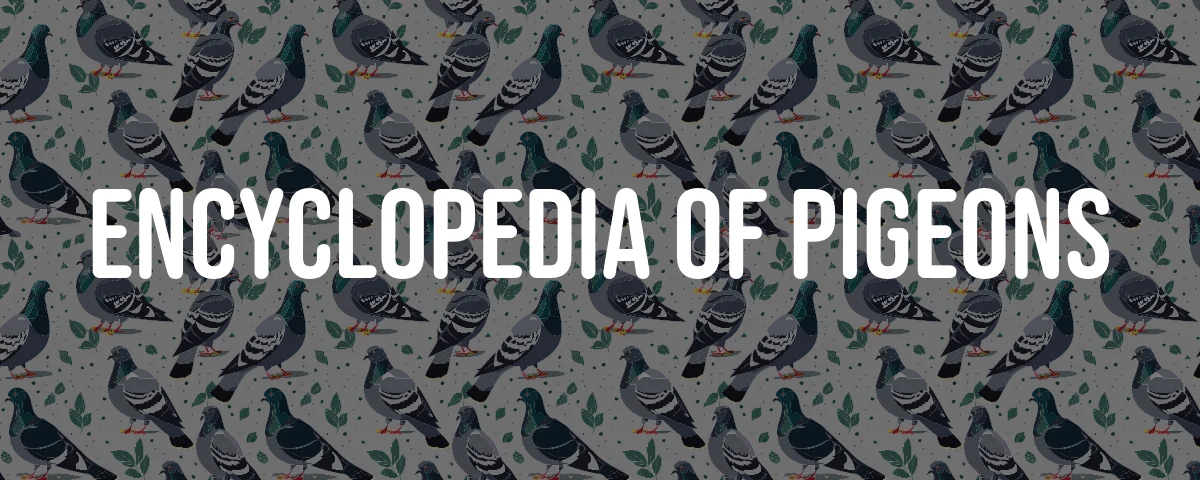Understanding the Viennese Gansel Tumbler
Picture this: a bird so dapper it could waltz through a Viennese ballroom, yet agile enough to outmaneuver a circus acrobat mid-flight. Enter the Viennese Gansel Tumbler, a breed that’s been the talk of pigeon fanciers’ circles for generations. It’s not just a pretty face, either. Nestled at the intersection of the tumbler and highflyer clans, this pigeon boasts a beak as short as a secret and a reputation stretching from Austria’s café-speckled streets to the lofts of seasoned breeders all over Europe. Its story? Equal parts beauty pageant and aerial Olympics.
What is the Viennese Gansel Tumbler?
When someone whispers “Gansel Tumbler” at a pigeon show, heads turn for good reason. This breed, rooted in Vienna’s storied past, is as mesmerizing on the wing as it is perched on a judge’s hand. Its acrobatics—think barrel rolls, midair pirouettes, and dives that would make a Red Bull pilot jealous—set it apart, but so does its compact, refined look. It’s not the most common sight in your local park; rather, it’s a bird with a pedigree, standardized across Europe and adored by those who know their beauty isn’t just feather-deep.
Historical Background: Origins in Vienna, Austria
Vienna, with its imperial palaces and waltzing ghosts, also gave us the Gansel Tumbler. Imagine 19th-century breeders, part scientist, part artist, meticulously coaxing elegance and athleticism out of ordinary city pigeons. This wasn’t just a pastime—it was an obsession. The Gansel Tumbler soon became a feathery emblem of Viennese pride, a living testament to the city’s knack for fusing art with function. Even before the Internet, word of this bird’s prowess spread far and wide, and soon enthusiasts from Berlin to Budapest were vying for a piece of Vienna’s airborne legacy.
Recognition and Popularity Since the 1850s
Picture the 1850s: pigeon fanciers, top hats askew, gathering at exhibitions where the Gansel Tumbler is the undisputed star. Its blend of show-stopping beauty and daring flight made it the toast of every aviary. Even today, its fanbase stretches across borders—Germany, France, you name it—each exhibition adding a new chapter to its legend. Collectors and breeders jostle for a glimpse, eager to add a bird (or three) to their lofts. It’s been trending since long before hashtags were even imagined.
Classification of the Viennese Gansel Tumbler
Let’s put it this way: if fancy pigeons had a royal family, the Gansel Tumbler would be the charismatic cousin who dazzles at every family gathering. It’s more than just pretty plumage; this bird brings skills. It’s known for:
- dazzling aerial displays – backflips, tight turns, the works,
- membership in the elite tumbler and highflyer clubs,
- a rare cocktail of style and stamina.
Ask any European breeder with dust on their boots—they’ll tell you this breed checks all the boxes for grace, grit, and showmanship.
Is it a Fancy Pigeon or a Tumbler?
Here’s the twist: the Gansel Tumbler isn’t content with just looking good. It’s the rare breed that can turn heads at a show and then turn somersaults in the sky. Exhibitors love its elegant contours, while flight aficionados marvel at its airborne antics. That duality—beauty and athleticism—puts the Gansel Tumbler in a league of its own. You could hang its portrait in a gallery or watch it steal the show above a city square; either way, you won’t forget it.
Subclasses: Domesticated and Fancy Pigeons
A little paperwork for the pigeon pedants: yes, the Viennese Gansel Tumbler is officially registered under the watchful eye of the Entente Européenne d’Aviculture et de Cuniculture. What does that mean? Years of selective breeding, rigorous standards, and a place among Europe’s avian aristocracy. Its blend of practical skills—think endurance, intelligence, and adaptability—paired with that unmistakable flair, makes it a perennial favorite among seasoned fanciers (and those with a soft spot for feathered showstoppers).
Characteristics of the Viennese Gansel Tumbler
You won’t mistake a Gansel Tumbler for an everyday street pigeon. Think petite but muscular, round-headed, and sporting a beak so short it almost looks bashful. The feathers? Like a box of artist’s pastels—black, red, yellow, blue—each hue more striking than the last. Beneath that showy exterior lies an engine built for aerial acrobatics, and a temperament so mellow it could teach yoga. Whether gracing the competition table or sitting companionably on your finger, its charm is undeniable.
Elegant Appearance and Color Variations
Let’s talk fashion. The Gansel Tumbler struts its stuff in a spectrum rivaling a Klimt painting: jet black, deep crimson, sunflower yellow, and sky blue. These aren’t just lucky accidents; generations of breeders have played matchmaker, ensuring each bird turns out with its own splashy signature. The result? A rainbow of tumblers turning every exhibition into a pageant—and giving judges a real headache trying to pick a favorite.
- black – classic, mysterious,
- red – fiery, impossible to ignore,
- yellow – sunshine with wings,
- blue – the color of a midsummer daydream.
No wonder they’re the darlings of the show circuit.
Flying Ability: A Highflyer Breed
Let’s be honest, most birds can fly. But the Gansel Tumbler? It’s got moves. Watching a flock take off is like seeing a flash mob break into synchronized dance above the rooftops. They climb, they tumble, they hover—sometimes for hours—leaving onlookers craning their necks in awe. Precision, stamina, and an undeniable flair for drama: those are the hallmarks of a true tumbler, and this Viennese native wears them all with pride.
Different Types of Viennese Gansel Tumblers
For the connoisseurs, there are subtleties within the breed. The Pigeon Culbutant de Vienne, for example, is a textbook case of what a Gansel Tumbler should be: short-beaked, compact, and dressed in those signature dazzling colors. Then there’s the Ganzel Marked Pigeon—a bird whose unique markings make it the avian equivalent of a custom sports car. These aren’t just cosmetic quirks. Each subtype is a living footnote in the ongoing story of careful, passionate breeding.
Pigeon Culbutant de Vienne: A Specific Type
Think of the Pigeon Culbutant de Vienne as the gold standard in the Gansel Tumbler universe. It ticks all the boxes:
- petite, athletic build,
- that telltale short beak,
- feathers so vibrant they’d make a peacock blush.
It’s not just about looks—this bird embodies everything the European fancy pigeon tradition aspires to. No wonder it’s a mainstay in the winner’s circle.
Ganzel Marked Pigeons: Unique Features
If you ever spot a Gansel Tumbler with markings so distinctive they look hand-painted, you’ve probably found a Ganzel Marked Pigeon. These birds are the show-offs of the breed, flaunting patterns that make other tumblers look plain. It’s the result of generations of breeders acting as both scientist and artist—a testament to what happens when passion meets patience.
Rarity and Popularity Across Europe
Let’s not sugarcoat it: getting your hands on a true Gansel Tumbler isn’t as easy as strolling through a Vienna park. Breeding them is an exercise in patience, precision, and—frankly—a bit of obsession. The breed’s rarity is no accident; maintaining those hallmark features (short beak, vivid plumage, gravity-defying aerials) takes serious know-how.
- that sharp, distinctive silhouette,
- the beak that could almost be missed at first glance,
- flight routines that leave even seasoned fanciers slack-jawed.
Yet, despite—or perhaps because of—their scarcity, the Gansel Tumbler has carved out a cult following, especially in Germany and across central Europe. Every exhibition is a reunion of sorts, a place where passion for feathered finesse runs deep.
Why is it Considered a Rare Breed?
Finding a true Gansel Tumbler is a bit like searching for a first edition in a dusty bookstore: possible, but only if you know where to look and what to look for. The breed’s rarity stems from a perfect storm of high breeding standards, a need for specialized care, and the sheer dedication required to keep the lineage pure. Each bird is a feathered heirloom, a little piece of living history.
- that elusive short beak,
- the daredevil flight skills,
- plumage that could stop traffic.
It’s no wonder only a select few breeders have the patience (and stubbornness) for the task.
Popularity in Germany and Other European Countries
You’ll find Gansel Tumblers dazzling crowds from Stuttgart to Krakow. In Germany, especially, the breed is something of a celebrity—regularly stealing the spotlight at competitions, their flights drawing oohs and aahs worthy of a fireworks display. The admiration doesn’t stop at borders; pigeon clubs everywhere have their own Gansel stories, each more colorful than the last.
Comparing Viennese Gansel Tumblers with Other Pigeon Breeds
Pigeon breeds are a bit like jazz bands—each has its own role, and the Gansel Tumbler is the charismatic soloist. Rollers? They’re the gymnasts, all flips and spins. Structure pigeons? Think supermodels, bred for looks rather than action. The Gansel Tumbler? It soars—literally and metaphorically—marrying good looks with athleticism in a way that’s rare among its peers.
- rollers bring the spectacle with their spins,
- structure pigeons win on looks alone,
- the Gansel Tumbler flies high, combining panache and performance.
Its secret sauce? That blend of show-ring appeal and aerial artistry.
Differences from Roller and Structure Pigeons
Imagine a roller pigeon: all flash, spinning through the air like a pigeon-sized tumbleweed. Now picture a structure pigeon—every feather in place, but more couch potato than athlete. The Gansel Tumbler splits the difference, gliding high above the rooftops with grace that’s neither showy nor sluggish. It’s the best of both worlds, and then some.
- rollers: acrobats,
- structure pigeons: posers,
- Gansel Tumblers: the elegant athletes of the skies.
Similarities with Other Tumbler Pigeons
Of course, the Gansel Tumbler still has its roots in the tumbler tradition—precision, agility, and a touch of theatricality. Like its cousins, it puts on a show in the air, but always with a Viennese twist: a little more refinement, a dash more drama. Breeders who chase both beauty and brawn find themselves inevitably drawn to this breed, lured by its singular mix of artistry and athleticism.
So, next time you find yourself at a pigeon show in some echoing European hall, keep an eye out for the bird with the short beak, the dazzling feathers, and a flight path as unpredictable as a waltz in a thunderstorm. You just might be witnessing a Gansel Tumbler in all its improbable glory.





